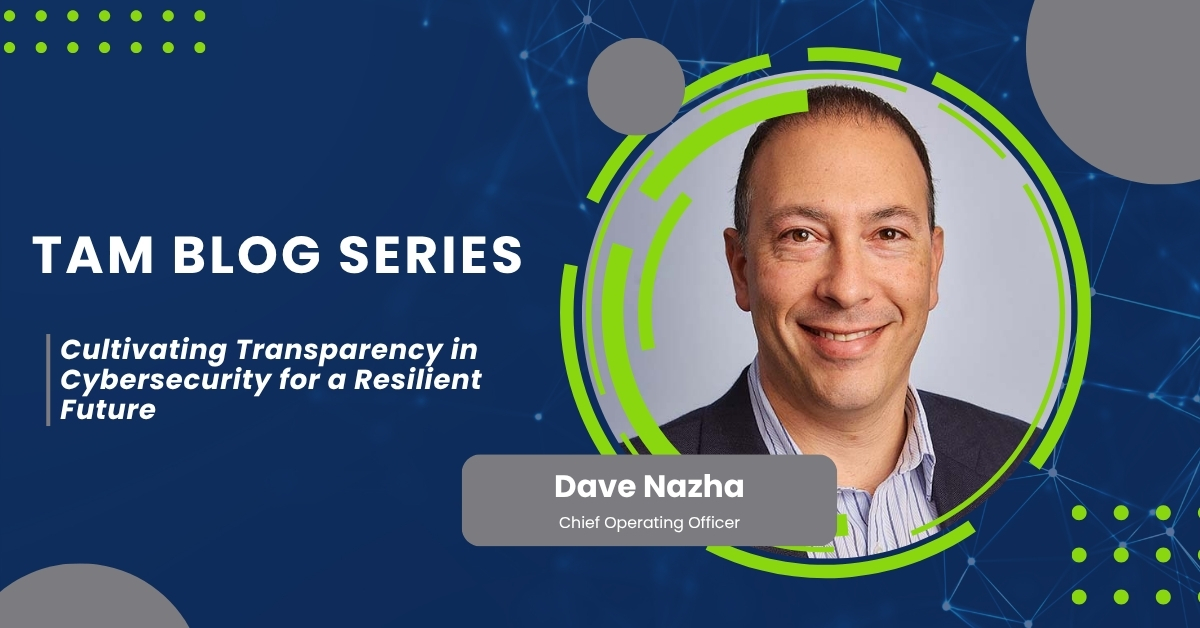By Dave Nazha, COO, Fulton May Solutions
Building a strong cybersecurity system isn’t just about advanced tech tools and firewalls; it’s about fostering a culture where transparency is valued, reporting is encouraged, and learning is prioritized. Organizations can arm themselves against modern cyber threats by cultivating openness and trust at all levels.
Why is transparency crucial in cybersecurity?
Transparent practices encourage employees to report potential threats or mistakes promptly, helping organizations address vulnerabilities faster. These actions not only protect against immediate risks but also prevent future incidents. Below, we’ll explore how to cultivate a transparent reporting culture and transform cybersecurity into a collective, organization-wide responsibility.
Why Transparency in Cybersecurity Matters
Cyber threats are constantly evolving. From phishing scams to AI-driven attacks, businesses face an expanding horizon of dangers. While investments in sophisticated technology are vital, they often overshadow human error, which remains one of the biggest vulnerabilities.
Here’s why transparency and a “report-first” culture are essential:
- Faster Response to Threats: Employees who report incidents immediately can help mitigate damage before it escalates.
- Reduced Fear of Repercussions: Transparency fosters psychological safety, encouraging employees to admit errors, allowing organizations to address weaknesses without a punitive culture.
- Collective Learning Opportunities: Every reported incident is an opportunity for the organization to learn, adapt, and fortify defenses.

Building a Transparent Cybersecurity Culture
Creating a transparent cybersecurity culture doesn’t happen overnight. Here are actionable steps to get started:
1. Set a Strong Foundation in the First 90 Days
For organizations new to transparency-focused initiatives, the first three months are crucial. Three foundational steps include:
- Clear Communication: Leadership should convey their commitment to open reporting from day one. Employees must understand that their honesty strengthens the organization.
- Establish Reporting Channels: Create accessible and straightforward mechanisms for reporting, such as anonymous portals or dedicated Teams channels.
- Provide Training: Equip employees with knowledge on how to spot signs of cyber threats, such as phishing emails, and how to report them promptly.
2. Walk the Talk
Transparency starts with leadership. Executives must lead by example by openly acknowledging their own mistakes or near misses. This demystifies the reporting process and reinforces psychological safety across the organization.
Example: A senior executive admits to falling for a phishing attempt during a company town hall. By discussing what went wrong and what they’ve learned, they send a powerful message that mistakes are human and reporting them benefits everyone.
3. Balance Accountability with a No-Fault Policy
Creating a no-fault reporting environment isn’t about neglecting accountability. Organizations need to differentiate between honest mistakes and negligence.
- Honest Mistakes: Treat these as learning opportunities. For example, clicking on a convincing phishing email can highlight areas in need of further training.
- Negligence: If an employee consistently ignores training and protocols leading to breaches, accountability measures should be applied.
The key is to maintain trust without compromising overall standards.

4. Implement Easy-to-Use Reporting Mechanisms
Successful incident reporting mechanisms are intuitive and fit seamlessly into employees’ routines:
- Anonymous Portals: Give employees the option to report incidents without fear of backlash.
- Teams or Workflow Integrations: Tools like Microsoft Teams workflows are immediate and user-friendly, encouraging real-time reporting.
- Hotlines or Dedicated Channels: Provide multiple accessible paths to report issues.
User-friendly systems encourage participation, fostering an open security culture.
5. Recognize and Reward Proactive Security Behaviors
Recognition programs tied to proactive reporting inspire collaboration across teams. Integrating these behaviors into performance reviews or shout-out systems (like peer-given badges or gift cards) ensures employees know their efforts are valued.
However, avoid creating perverse incentives that could encourage dishonest reporting. The goal is to celebrate honesty and proactive prevention, not negligent mistakes.
6. Focus on Leading Indicators
Organizations often measure success in cybersecurity by lagging indicators, like breach statistics. While important, these metrics don’t address early-stage cultural health. Instead, monitor:
- Reporting Volumes: Increased reporting of minor incidents signals a healthy reporting culture.
- Cross-Team Engagement: Active collaboration between departments reflects confidence in the reporting process.
7. Share Lessons Learned Without Fear or Blame
When incidents do occur, treat them as opportunities to enhance collective resilience. Document and share learnings across the organization while avoiding fear-based language or blame games.
Effective Communication Practices:
- Focus on the solution rather than the mistake.
- Use anonymous examples to illustrate vulnerabilities, keeping individuals’ identities confidential.
- Reinforce that transparency protects the entire organization.
8. Prepare for AI-Driven Challenges
With AI-driven cyber threats on the rise, maintaining a transparent security culture is more critical than ever. Cyber criminals now use AI to create more persuasive phishing emails or orchestrate highly targeted attacks. Organizations must:
- Invest in Smarter Tools: Tools like AI-powered antivirus software can provide proactive defense.
- Prioritize Ongoing Education: Equip employees to spot new threat patterns as the cyber landscape evolves.
- Build Trust Continuously: Adapt your training to highlight the cultural and technological shifts within cybersecurity.

A Journey, Not a Destination
Cultivating transparency in cybersecurity is a continuous effort, not a one-time initiative. By committing to accountability, communication, and learning at every level, organizations can foster an environment where employees feel empowered to report incidents without fear.
The benefits are undeniable. A transparent cybersecurity culture not only strengthens defenses but also positions an organization as a shining example in an increasingly complex threat environment.
Looking to instill transparency in your organization’s cybersecurity culture?
Fulton May Solutions offers tailored strategies to align your leadership goals with effective transparency practices. Contact us today to learn more.





